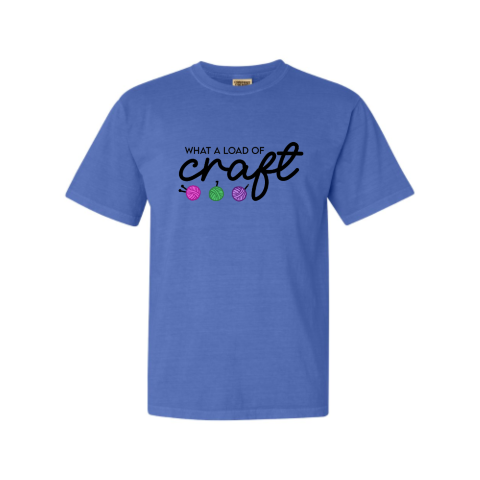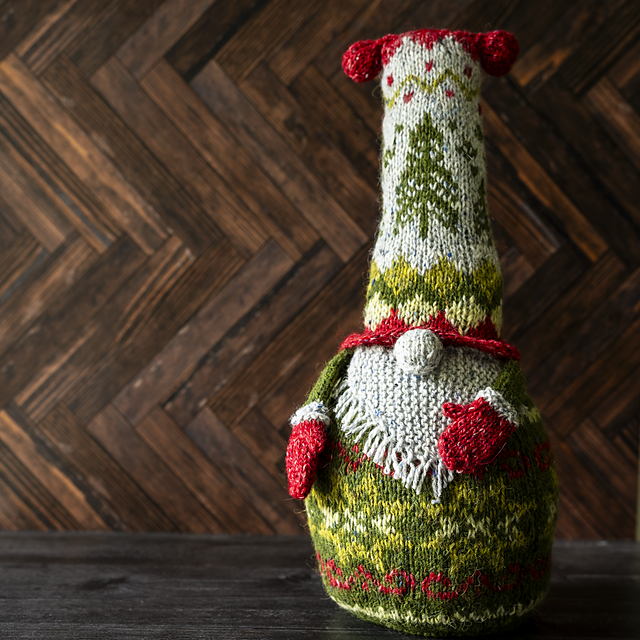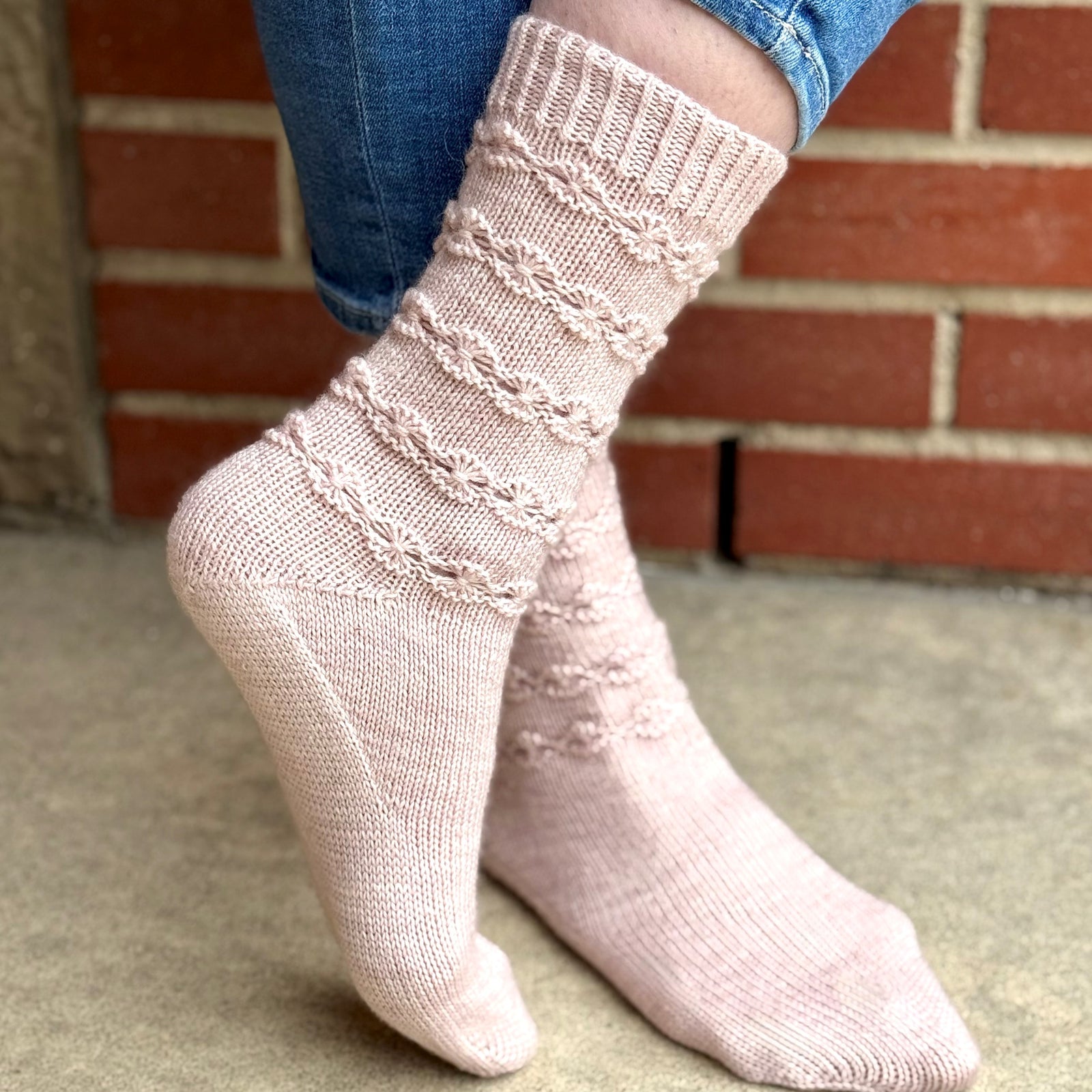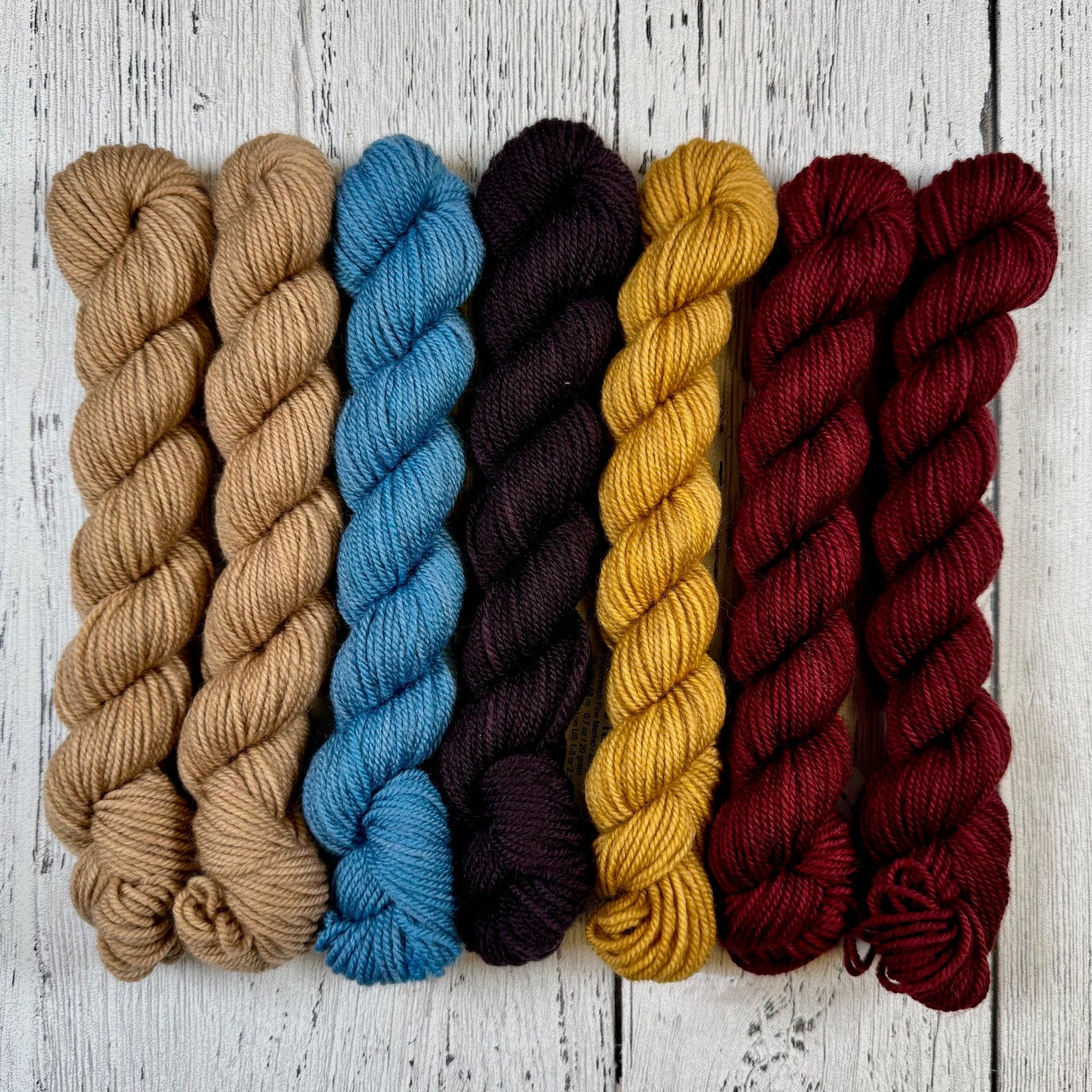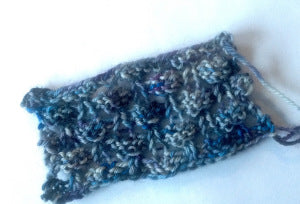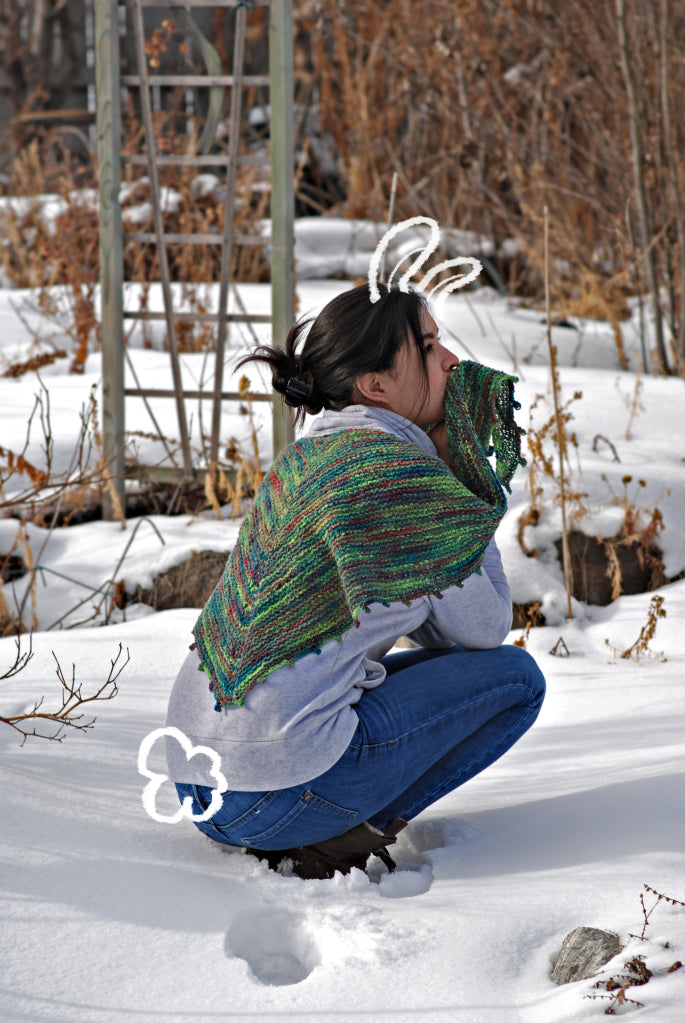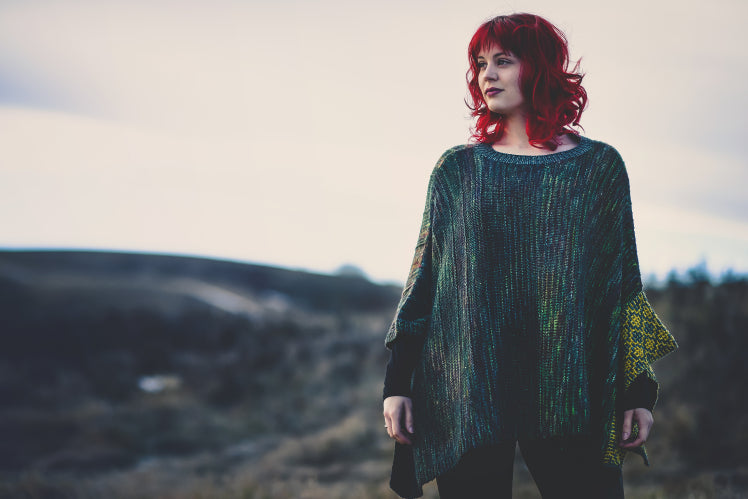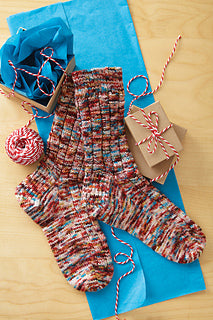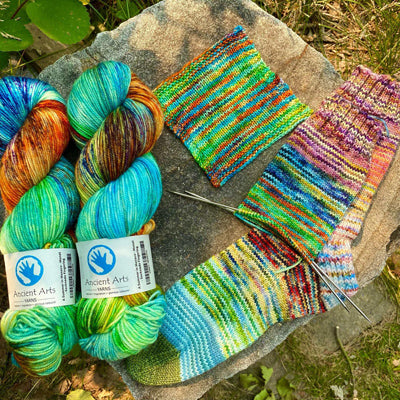Earlier this fall, our BFL fingering yarn base made its triumphant return after a hiatus. We couldn’t be more pleased! On today’s post, we’d like to offer both Caroline’s and Barb’s thoughts on what makes this yarn base so special, and why we are celebrating its return with cartwheels and backflips (well, in our minds, at least). Enjoy!
From The Barb Brown:

The BFL fingering yarn has arrived, after being absent for some time. One of the arduous duties assigned to me here at Ancient Arts Yarns is test knitting yarns and giving feedback. Oh, such a hard life I lead…and they pay me to do this. How could life get better than that?!
One of the first things I noticed about this yarn was the lovely feel of it. Some long wool can seem a little coarse in the ball, but this one is pleasant and smooth. Once I had knitted up a large enough piece, I gave the fabric a good squish, stroked it, and patted it (what knitter doesn’t want to do that?). Then, it got even better! The fabric is surprisingly soft. I’ve used Blue Faced Leicester yarn before, so the smooth and silky feeling was not really a surprise, but the soft hand of this particular yarn put it at the top end of the lot. Before my boys went to school, they were dressed pretty much head to toe in wool, and I would not have hesitated to use this for a sweater for them.
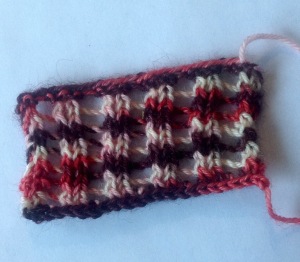
Knitting with the BFL fingering is a treat, first and foremost because it does not split. I promise – it just doesn’t, thanks to the 4 ply construction. I use quite small needles (size 2.5mm/US 1.5) with very sharp tips, and nothing slows me down like yarn splitting as I knit. The twist on this yarn is perfect: tight enough to prevent splitting, while loose enough to give a soft hand. This perfect balance lets the yarn just flow onto the needles. I know Caroline has all the science of this at her fingertips, but I just know that knitting with this yarn was a delight!
I tried out a few different stitches to see how they knit up in this yarn, including a bit of lace, texture, and some ribbing. Then I washed and blocked the swatches – and right there is my favorite thing about yarn made from this fibre: when you block it, it stays blocked. It doesn’t sloooooowly ease back to the original size. It stays where it’s put. There are myths out there that superwash yarns will not stayed blocked, but our yarn puts those squarely where they belong: in the myth category!
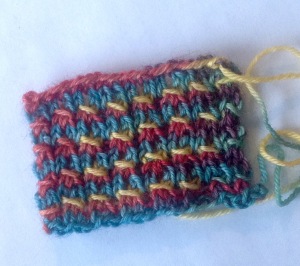
My last test is always what I call the Rip Test: oooops…made a mistake….Riiiiiiiiip! I knit and ripped and re-knit, then ripped back again for a total of 5 times (thankfully, I usually don’t have to do that in real life….well, at least that many times!). Then I knit a large swatch, knitting past the yarn that had been through the torture test, and that’s where the magic happened: I absolutely could not tell where the frogged yarn started. There was no wear on the re-knit yarn, and more importantnly, no pills or fuzz. I really appreciate that in a yarn, as sometimes when I’m designing, I will rip things out 5 or 7 times till it all works (ok, so maybe I do have to do that in real life after all).
The colours (as you can see in the swatches) are stunning. BFL takes the dye beautifully, and showcases the stunning colours. It’s an interesting yarn because the various layers of dye can almost appear three dimensional at times, floating over the surface of the yarn, thanks to the characteristics of the wool itself.

In conclusion, I am extremely pleased with this yarn! It passes all my personal tests with flying colours, including the swatch test, which is my least favourite…so you know that if I knit more than one swatch in a yarn test,I really love the yarn!
CYO Caroline:
No review of a yarn would be complete without taking about the materials which compose it along with how it is spun, because these are very important factors in how a yarn behaves when it is knit and worn! The yarn we are reviewing today is made from 100% wool that comes from a breed of sheep called the Blue-faced Leicester Sheep. Blue-faced Leicester sheep (BFL sheep for short) produce interesting wool that is quite different from that of the classic fluffy white sheep we count when trying to go to sleep. These sheep are classed as long wool sheep, meaning their fleece grows to be approximately six inches (15cm) between shearing, and it grows in lovely curly ringlets and locks. Long wool sheep like the BFL produce a fibre that is longer, stronger, and shinier than wool that comes from breeds such as the merino.

BFL sheep originate in Britain and date back to the early 1900’s as a breed; their name comes from the skin of their heads which is a dark blue/grey that shines through the wool. The majority of these sheep today are still found in the United Kingdom (which is where our own wool is sourced), as well as Canada and the United States. BFL wool is considered to be very soft long wool, with a reasonable amount of elasticity and loft, and it is semi-lustrous. The wool is ideal for use in making smooth strong fabric and yarn that has lots of drape. This translates into hard-wearing socks and mittens, lovely shawls with excellent body and drape, and sweaters that hold their shape but are comfortable to wear!
BFL wool has much to recommend it. From the dyer’s perspective, it’s fabulous to work with because it likes to take dye in brilliant jewel tones. It has a naturally warm tone to it, appearing creamy in shade when undyed, and not ice white like some other wools. This natural colour adds delicate warmth to colours that are dyed onto this yarn.
From the knitter/crocheter’s perspective, the yarn is highly desirable because it can be spun into an excellent worsted style yarn that has lots of strength, drape and excellent body. Worsted yarn is is spun with all the fibres arranged parallel to each other and running lengthwise along the yarn. Such yarns are smooth, strong, and less prone to pilling than a fuzzy woolen yarn. Our yarn has four plies which increase the longer term resistance to pilling as there is more twist in the yarn to hold the fibre ends in than one finds in a two or three ply yarn.
The length of BFL fibres and their strength means a yarn made from this wool will be strong and suitable for all sorts of projects, including socks, shawls, sweaters and more! It is durable and lasts longer than merino wool yarns, even without the additional of nylon. This yarn softens as it is knit, and in the finished garment, and has a silky handle that comes out with wear.
We look forward to seeing your projects using BFL Yarn over in our Ravelry group!

